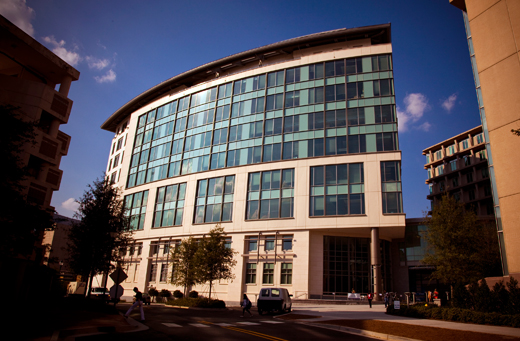From the Ground Up
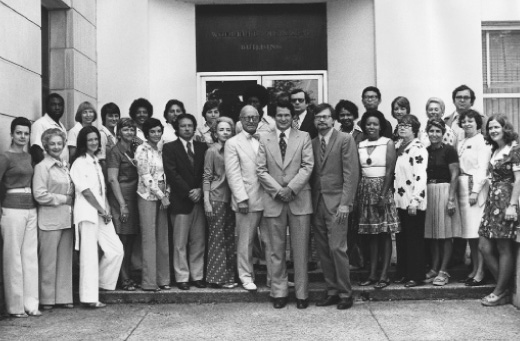
35 years of public health at Emory
By Tarvis E. Thompson
This year marks four milestones for the Rollins School of Public Health: 35 years as a program, 20 years as a school, James Curran’s 15 years as dean, and the opening of the Claudia Nance Rollins Building. All reaffirm that Rollins’ location in Atlanta—the epicenter for public health—and its partnerships with area institutions have provided a strong foundation for building a school from the ground up.
|
|
1972
Medical school faculty members Tom Sellers and Bill Marine discuss an idea to begin a community health training program with Dean Arthur Richardson.
1974
Under the leadership of community medicine chair Tom Sellers, Bill Marine leads an executive planning group that includes David Sencer (CDC), George Wren (Georgia State University), Abbott Ferris (Emory sociology and anthropology), E.C. Hall (Emory biometry), and Sellers.
On September 19, Emory's Board of Trustees approves the Masters of Community Health (MCH) program and degree.
Constance Conrad (School of Medicine) and Kathy Rufo (CDC) develop a curriculum. Roland “Knob” Knobel (Georgia State), David Sencer (CDC), Richard Levinson (Emory sociology), and Bill Marine teach core courses.
1975
MCH program administrators move from Grady Memorial Hospital to a small house on campus at 1518 Clifton Road.
The first class of 16 students is admitted. Tuition is $88 per quarter hour.
1976
Connie Conrad becomes MCH program director. John Boring and John McGowan join the faculty to teach measurement science. Fred Kennedy joins the program in 1977 to teach management.
1980
Emory’s community health program receives accreditation along with two other programs in the nation.
|
|
1982
Eugene Gangarosa joins Emory to direct the community health program. Enrollment triples within the first year of his leadership.
1983
Emory changes the program name from Masters of Community Health to Masters of Public Health (MPH).
1985
The late Virginia DeHaan, a 1977 graduate, writes the MPH program’s second accreditation report. The program receives an overwhelming endorsement.
Roger Rochat and Mike Lane establish the international health track with assistance from Joan Herold. Clark Heath and John Richardson establish the environmental and occupational health track. Alumni Kathy Miner and Nancy Thompson return to Emory to establish the health education and epidemiology tracks.
1987
The School of Medicine creates the Department of Epidemiology (led by John Boring) and Biostatistics (led by Michael Kutner). Physician Ray Greenberg oversees the department.
1988
With growth of the student body and faculty, the MPH program moves to the fourth floor of the newly constructed American Cancer Society headquarters on Clifton Road.
1989
The MPH program becomes a division of the Woodruff Health Sciences Center. Charles Hatcher, Emory’s vice president for health affairs, advocates elevating the program to school status. Jeffrey Houpt, dean of the medical school, also supports the idea.
|
|
1990
The number of MPH graduates climbs to more than 300.
On September 13, Emory President James Laney and the Board of Trustees grant school status to the MPH division, making it the first new school at Emory in 71 years. Ray Greenberg is named dean.
Greenberg appoints Fred Kennedy as associate dean for management and planning and Michael Kutner as associate dean for academic affairs. The school has five divisions (behavioral sciences, biostatistics, environmental health, epidemiology, and health policy) and a Center for International Health.
1991
Emory philanthropist O. Wayne Rollins dies unexpectedly. His wife Grace and sons Randall and Gary fulfill his interest in a building to house the school with a major gift.
1993
In April, Grace Crum Rollins breaks ground for the building that will bear her name.
Gene and Rose Gangarosa establish the Eugene J. Gangarosa Scholarship Fund to provide global research opportunities for students.
Carol Hogue joins the RSPH as the Jules and Uldeen Terry Chair in Maternal and Child Health (the school's first endowed chair) and establishes the Women's and Children's Center. Other faculty join the school, including Reynaldo Martorell, Robert W. Woodruff Professor of International Nutrition, and epidemiologist David Kleinbaum, who would become the nation's first recipient of the Award for Teaching Excellence, presented by the Association of Schools of Public Health and Pfizer Inc. in 2005.
Emergency medicine physician Arthur Kellermann establishes the Center for Injury Control.
Philip Brachman directs the Hubert H. Humphrey Fellowship Program for mid-career professionals from developing countries and Central and Eastern European nations.
1994
The school is named the Rollins School of Public Health to recognize the family's long-term support for Emory. It is the first U.S. public health school named for a benefactor.
During winter break, the school moves into the Grace Crum Rollins Building at 1518 Clifton Road.
|
|
1995
Ray Greenberg resigns as dean to become vice president for academic affairs and provost at the Medical University of South Carolina.
James Curran, an internationally recognized scientist who led the CDC's AIDS effort, joins the school as its second dean.
The school presents the first Distinguished Alumni Achievement Award to Marie McLeod 90MPH.
1996
The Dean’s Council, an outgrowth of the Founding Advisory and Community Advisory boards, is established.
The MD/MPH program is formed, one of several joint degree programs the school comes to offer in nursing, business, law, physical therapy, medical science, and theology.
1997
William Foege joins the school as Presidential Distinguished Professor of International Health.
The O. Wayne and Grace Crum Rollins Endowment Fund is established to provide unrestricted support for academic needs.
To honor the former vice president for health affairs, the school establishes the Charles R. Hatcher Jr. Award for Excellence in Public Health.
1998
The Hubert family establishes the O.C. Hubert Fellowships for student research in other countries.
The Emory Woman’s Club endows a scholarship, bolstering the school’s effort to raise support for students. Other named scholarships honor Thomas F. Sellers, Sallie B. Lee, and Anne E. and William A. Foege.
The NIH designates Emory as a Center for AIDS Research (CFAR), with James Curran as principal investigator. Today, CFAR supports 320 researchers receiving more than $41 million in NIH funding.
Ralph DiClemente joins the RSPH as Charles Howard Candler Professor and chair of behavioral sciences. DiClemente and his wife, Gina Wingood, the Agnes Moore Faculty in HIV Research, are known for their work in designing HIV/AIDS intervention programs for women and adolescents.
1999
The school hosts its first Edmund S. Muskie fellows and establishes an international master’s program with the Peace Corps.
U.S. health policy expert Ken Thorpe is appointed Robert W. Woodruff Professor and chair of health policy and management. He succeeds Richard Saltman as chair.
|
|
2000
The school graduates its 2,000th alumnus, Paula Morgan.
2001
A vaccine produced by a CFAR team led by Harriet Robinson is hailed as the “most promising AIDS vaccine yet” in the March issue of Science magazine.
The Tobacco and Technical Assistance Consortium (TTAC) is formed to provide blueprints for community tobacco control and prevention programs. TTAC funding is Emory’s largest cancer research grant to date.
The Georgia Cancer Coalition (GCC) establishes the Distinguished Cancer Clinicians and Scientists program. Today, the school has six GCC scholars.
The Rollins family provides $4.2 million to establish the Center for Public Health Preparedness and Research, led by Rollins Professor Ruth Berkelman. The center is created in the wake of 9/11 and the anthrax threat.
2002
The Bill & Melinda Gates Foundation provides its first endowment gift ever of $5 million to establish the William H. Foege Fellowships in Global Health. The fellowships bring mid-career professionals from developing countries to work at Atlanta public health agencies.
Health policy professor Benjamin Druss is named the Rosalynn Carter Chair of Mental Health, the first joint appointment between the RSPH and the Carter Center.
Claire Sterk, chair of behavioral sciences, is named Charles Howard Candler Professor of Behavioral Sciences and Health Education. She steps down as chair in 2005 to become Emory senior vice provost.
The Matthew Lee Girvin Award is established to honor young alumni who have made signficiant contributions to public health early in their careers. A 1994 alumnus, Girvin died in 2001 during a U.N. surveying mission in Mongolia.
2003
MD/MPH students Jeremy Hess and Jill Jarrell are the first recipients of the O.C. Hubert EIS 50th Anniversary Fellowships, allowing them to participate in an applied epidemiology rotation at the CDC.
2004
The RSPH ranks 10th among all U.S. schools of public health in attracting NIH funding.
The school adds doctoral programs in behavioral sciences and health education and in health services research to existing PhD programs in biostatistics, epidemiology, and nutrition and health sciences.
The Department of Biostatistics establishes the annual Donna J. Brogan Lecture to honor Brogan’s 34 years of service on the Emory faculty. Lecture topics focus on Brogan’s interests in sample surveys, breast cancer epidemiology, and statistical education.
|
|
2005
The school forms the Emory Center for Global Safe Water with CARE, the CDC, and Population Services International. Eugene and Rose Gangarosa create endowments for the Eugene J. Gangarosa Chair in Safe Water, held by Christine Moe, and the Rose Salamone Gangarosa Chair in Environmental Health.
Keith Klugman is named the first William H. Foege Chair in Global Health, funded by the Hubert Foundation. The South Africa native is the world’s leading expert on antibiotic-resistant pneumonia.
Funded by the CDC, the Emory Prevention Research Center partners with the Southwest Georgia Cancer Coalition to reduce cancer rates in 33 rural counties.
2006
The school dedicates the Hubert Department of Global Health. It is the first solely named department on the Emory campus and the first such named department among the nation’s schools of public health.
K.M. Venkat Narayan joins the school as the Ruth and O.C. Hubert Professor in Global Health. Narayan co-leads the Global Diabetes Research Center with researchers in India.
Michael Windle is named Rollins Professor and chair of behavioral sciences and health education. His research focuses on the mental health and related health risk behaviors of children and teens. Windle succeeds Claire Sterk as chair.
The Richard E. Letz Endowment Fund for Dissertation Research is established to honor Letz, who dies in April. Letz was professor and former chair of behavioral sciences.
The International AIDS Trust moves from Washington, D.C., to the RSPH. Sandra Thurman, former director of the White House Office of National AIDS Policy, joins the faculty.
|
|
2007
The O. Wayne Rollins Foundation and the Rollins family pledge $50 million to construct the Claudia Nance Rollins Building and renovate the Grace Crum Rollins Building.
Family members establish the David J. Sencer MD, MPH Scholarship Fund for local and state public health professionals. A “founding father” of the RSPH, Sencer directed the CDC from 1966 to 1977.
The school ranks 7th among its peers in U.S. News & World Report’s 2008 edition of “America’s Best Graduate Schools.”
Air quality expert Paige Tolbert succeeds Howard Frumkin as chair of environmental and occupational Health (known today as environmental health).
The Center for Biomedical Imaging Statistics, serving Emory researchers and clinicians, is established. Led by DuBois Bowman, the center is the first of its kind in the nation.
Incoming students prepare meals for AIDS patients, beautify homes for senior citizens, and clean up community parks during the first annual Rollinsteer Day of community service.
2008
TTAC and the Emory Global Health Institute begin to work in China to help curb tobacco use among the nation’s 400 million smokers.
Toxicologist Gary Miller leads the new Parkinson’s Disease Collaborative Environmental Research Center, involving researchers from Emory and Georgia Tech. Miller is named associate dean for research in 2009.
In May, the Rollins family and the Emory community break ground on the Claudia Nance Rollins Building, next to the Grace Crum Rollins Building. Construction begins in June.
2009
Carlos del Rio, an internationally known expert in HIV/AIDS, is named Hubert Professor and chair of the Hubert Department of Global Health. He succeeds Reynaldo Martorell as chair.
|
|
Lance Waller succeeds Michael Kutner as Rollins Professor and chair of biostatistics and bioinformatics. The department added “biostatistics” to its name in 2008 to reflect the growing need
for computational and statistical expertise in public health, medicine, and nursing.
James Curran becomes the first sitting dean at Emory to hold an endowed chair named in his honor. The James W. Curran Dean of Public Health chair is made possible by gifts from Emory and Lawrence P. and Ann Estes Klamon.
Grace Crum Rollins dies on August 8 at age 98.
John McGowan and his wife Linda Kay establish the John E. and Doris W. McGowan Scholarship to provide tuition support for an MD/MPH student during the MPH year. McGowan directs the MD/MPH program, which graduates its 100th student in 2010.
2010
Viola Vaccarino is appointed Rollins Professor and chair of epidemiology, broadening the school’s collaborations in cardiovascular disease. She succeeds cancer epidemiologist Jack Mandel as chair.
The school dedicates the Claudia Nance Rollins Building in October. The building more than doubles the physical size of the RSPH complex to accelerate teaching, collaborative research, and recruitment of faculty and students.
Total Rollins alumni top 5,300 in more than 90 countries.
The Claudia Nance Rollins Building

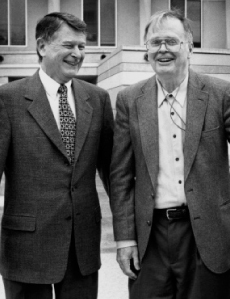 MCH pioneers Bill Marine and Tom Sellers
MCH pioneers Bill Marine and Tom Sellers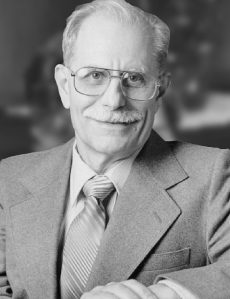 Eugene Gangarosa, MCH program director
Eugene Gangarosa, MCH program director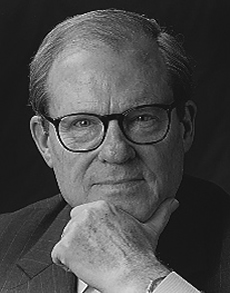 President James Laney was among Emory’s key leaders who played a role in establishing a school of public health.
President James Laney was among Emory’s key leaders who played a role in establishing a school of public health.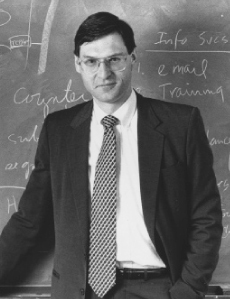 Ray Greenberg, the school's first dean
Ray Greenberg, the school's first dean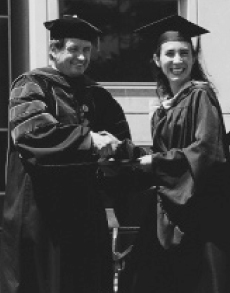 Dean James Curran and Paula Morgan, the 2000th graduate
Dean James Curran and Paula Morgan, the 2000th graduate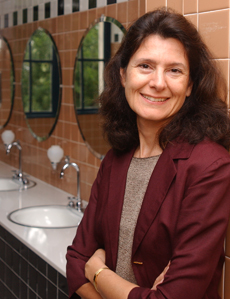 Christine Moe, the Eugene J. Gangarosa Chair in Safe Water
Christine Moe, the Eugene J. Gangarosa Chair in Safe Water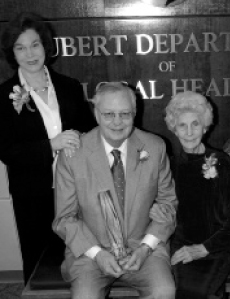 L-R: Linda, Richard, and Ruth Hubert
L-R: Linda, Richard, and Ruth Hubert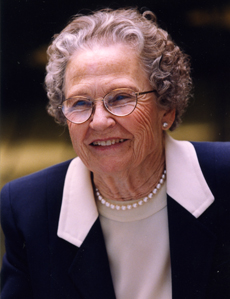 Grace Crum Rollins, for whom the school's first building is named.
Grace Crum Rollins, for whom the school's first building is named.